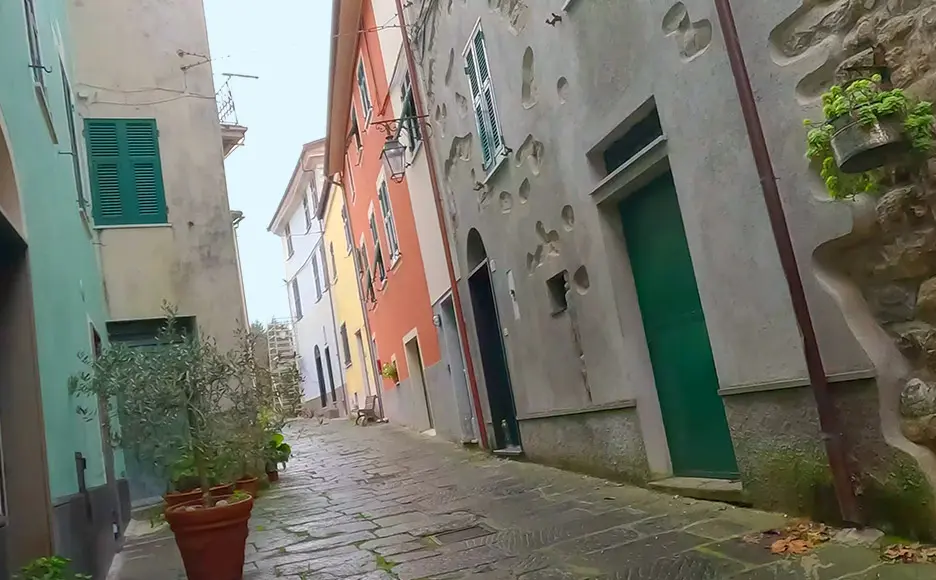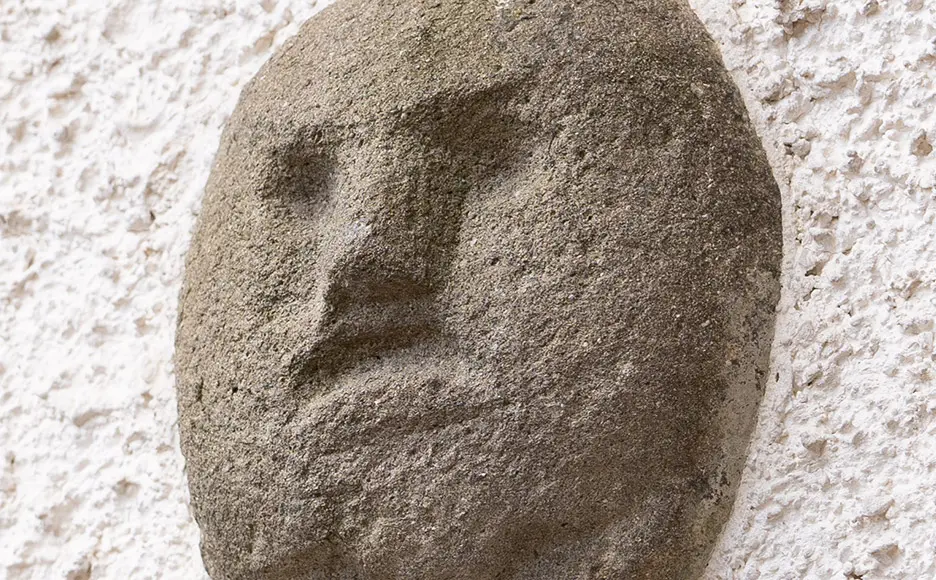

Like every hamlet, town and city in our beautiful country, Carro, with its territory, holds stories, beauty and traditions just waiting to be discovered. From the magnificent architecture of its churches to the famous apotropaic heads that populate the characteristic “carruggi”, from the production of chestnut flour at the old mill to liturgical events and historical re-enactments.


 Cultural walks
Cultural walks
In the small hamlets, the narrow streets, the carruggi, the colourful, bare-stone houses, the squares and, above all, the churches, offer cues for discovering their history and imagining an itinerary that can combine environment, art and culture, experiencing moments of conviviality during the festivals celebrating the patron saints.

The ideal starting point is the square in Carro, dominated by the church of San Lorenzo (whose Saint’s day is 10 August) built around 1440 on an earlier chapel dedicated to Saint Catherine. The building houses the Madonna del Carmine, a painting attributed to Domenico Piola, and a painting of St Lawrence by Flemish painter Giuseppe Dorffmeister.
At the far end of the village is the Oratory of the Confraternity of St Sebastian, an ancient building that houses this voluntary association, with roots in the Middle Ages, of faithful lay people.


In Agnola, near a small church dedicated to St Gotthard, visitors can still see signs of an ancient monastic settlement and examples of those apotropaic heads, enigmatic faces carved in stone, typical of this area.
A few kilometres further up is Castello with its fortress, which has now disappeared but has been incorporated into the church of St George, celebrated every year on 24 April. This once majestic fortification had the task of safeguarding the safety of the valley. Not far away, in the hamlet of Pera, we find the 18th-century church dedicated to St Joseph, which, like the sanctuary of Cerreta, is set in an idyllic and evocative rural landscape.
Moving on to Pavareto, visitors can discover a charming church dedicated to San Pellegrino, in the surroundings of which traces of an ancient quarry can be seen, from which a stone called ‘Rosso di Levanto’ was extracted. A few kilometres away we find the church of Ziona dedicated to Santa Maria della Speranza, celebrated on the first Sunday in July, and a small oratory at Ponte Santa Margherita, once a place of refreshment for pilgrims.

CLICK AND BROWSE

CLICK AND BROWSE
 Apotropaic heads
Apotropaic heads
The intensity of the phenomenon of these ‘heads’ on the architraves and portals of houses carved in sandstone, the local stone, and still visible in the façades of old buildings, is a significant phenomenon in Agnola and Carro. Examples of a popular art typical of rural communities and in particular those linked to the mountains. These sculptures take us back to a world shaped by superstition and magical beliefs, as in years gone by they had a predominantly superstitious and protective function.


 The Travo Mill
The Travo Mill
In the valley traversed by the Rio Travo, there is an ancient stone water mill from the 1700s, the only one in operation in the Val di Vara, used to grind chestnut flour. Together with a drying kiln which is over 200 years old, it is part of a museum tour whose common thread is chestnut cultivation. Chestnut cultivation was one of the main agricultural activities in the past, as chestnut flour was the basis of food during the winter months, while villagers waited for the countryside to provide some other product of the earth.


Boschi Sonori is a project that aims to recover and enhance the history and identity of the Carro area. It focuses on the environmental ecosystem and its social and cultural connections.
It is divided into two parts: the first is the Premio Boschi Sonori (Sound Woods Prize) dedicated to environmental art, the central theme of which is the importance of the forest, its care and conservation. The first edition will feature two works that will be installed in the landscape.
The second part consists of the creation of the Carro Community Map, the true heart of the project, which highlights the material and intangible heritage that the local population has chosen as a symbol of their identity and history. Within this map, which will grow over the years, there are tourist-cultural routes that will lead you to discover the traditions of the place.



